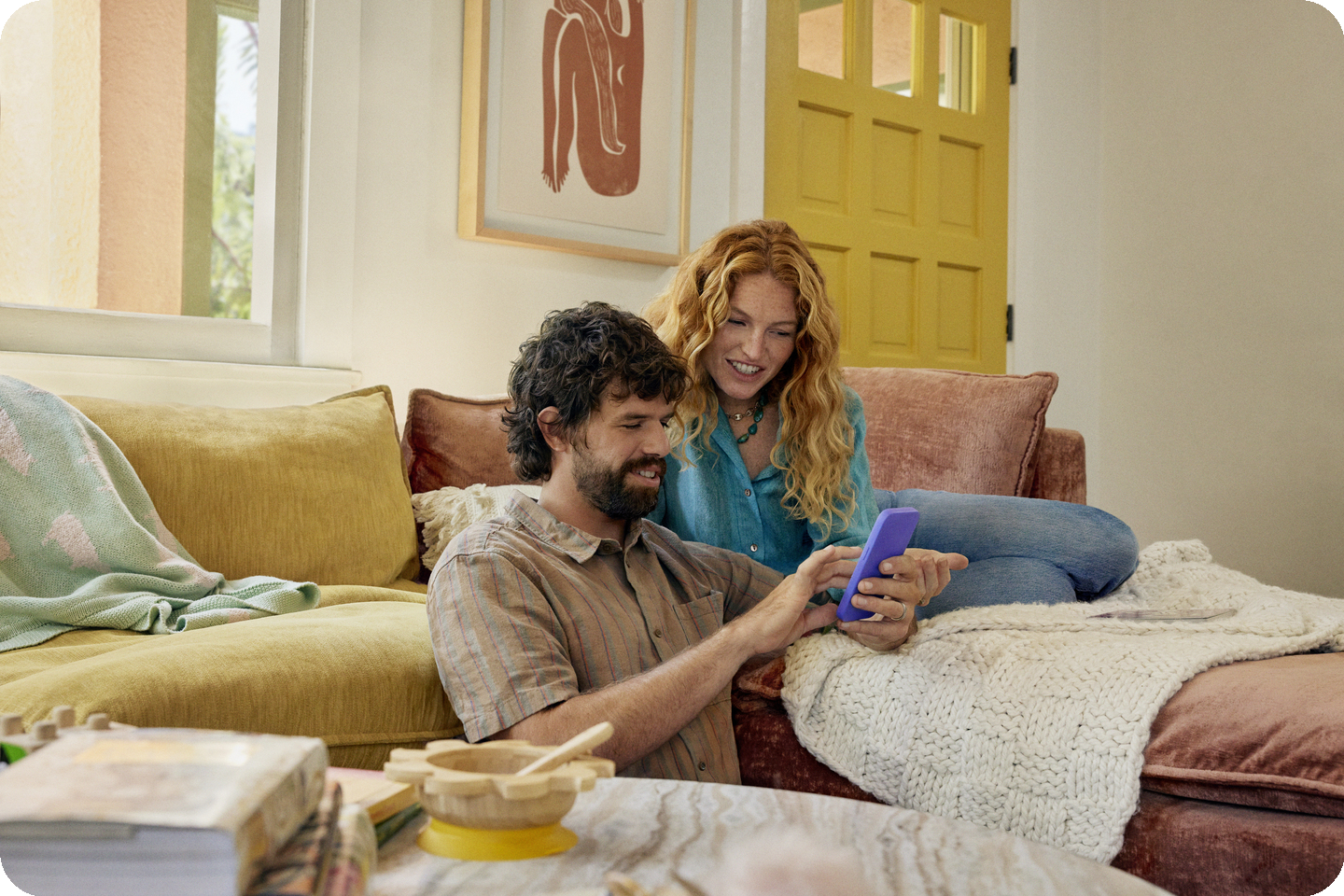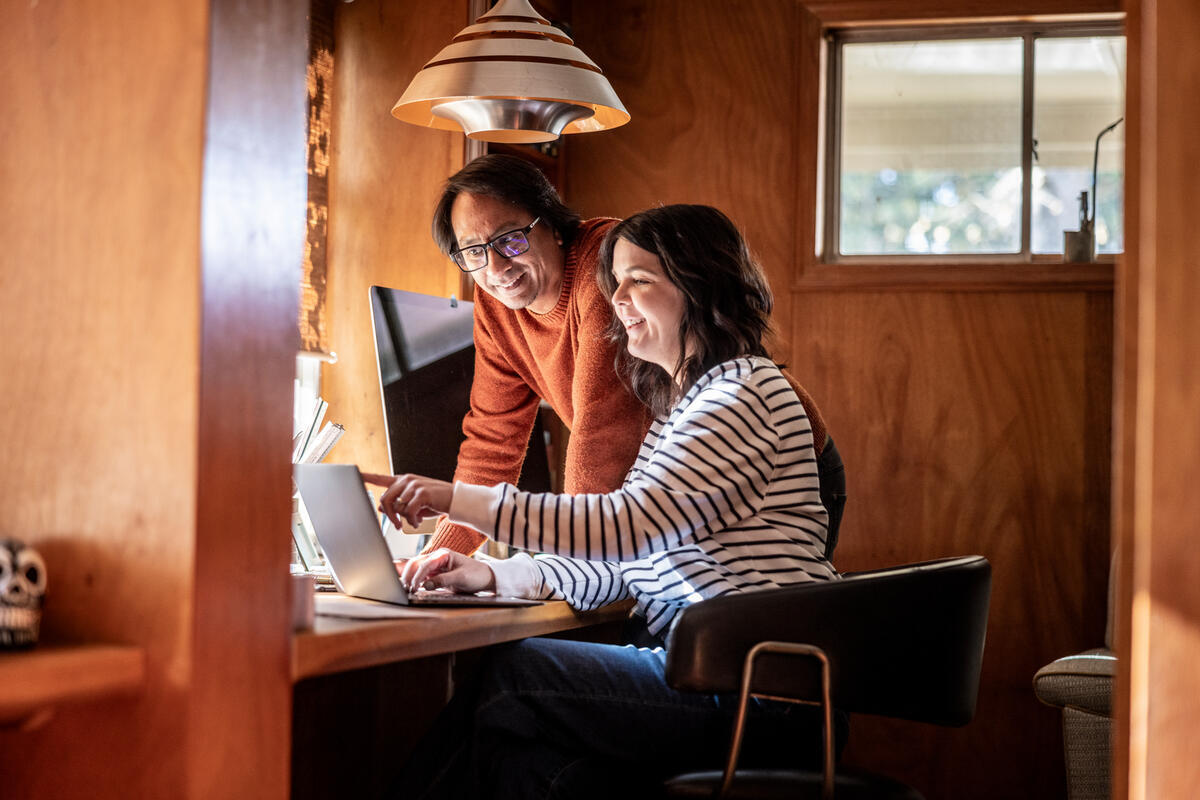Making Financial Sense: What Housing-Related Choices Make Sense For You
From buying a fixer to buying down mortgage rates, buyers have lots of options. Which ones pencil out in your favor?


Written by Susan Kelleher on November 12, 2025
Most buyers consider their homes a financial investment, so knowing what may or may not be a smart money move when it comes to buying and owning a home can go a long way to protecting your wallet and your investment.
The first thing to remember is there’s no one-size-fits-all answer for everyone. And what’s right for you will depend on your personal financial situation, your tolerance for risk and your goals, both short- and long-term.
With that background, let’s look at some choices you might be considering as you think about whether to buy a home, and how to finance it and improve it.
Fixer vs. move-in-ready home
Q: You have a choice to buy a fixer upper, priced at a discount, or a move-in-ready home selling for a premium. Which is a better buy from a financial perspective?
Option 1: Buy a fixer
First, consider the fixer-upper. Is it a true fixer — something you can improve and live in without blowing through your savings, or a money pit — a home that will require endless maintenance and require you to replace expensive systems such as the roof, heating and cooling or a side sewer. If it’s the latter, you’ll probably end up spending more than you expect to keep the home functioning, which could erase any savings you expected from buying a fixer. But if you have mad DIY skills, and can handle things like plumbing, drywall mudding and tiling, this could be an opportunity to fix your home to your liking over time at a discount.
Option 2: Buy a move-in-ready home
A turn-key home tends to require less money to maintain since fewer things have to be replaced right away. Buying the fixer could make more sense if you’re willing and able to live in the home while making improvements over time to get the home you want. Buying the turnkey home could make sense if the cost of the improvements to the fixer would erase whatever savings you might realize by paying less for the home.
Take our fixer-upper quiz to learn more.
Bigger down payment vs. investing that money
Q: Should you save for a bigger down payment on a home or keep that money and invest it?
Option 1: Put down a larger down payment
Putting down a larger down payment will lower your borrowing costs because you’ll be paying less interest on the money you borrow. If you put down 20%, you’ll also avoid having to pay private mortgage insurance. Putting more down allows you to build equity in your home more quickly, and can often get you a lower interest rate on your mortgage.
For example, here is what your monthly principal and interest payments would look like if you put various amounts down on a $360,000 home with a fixed-rate, 30-year mortgage at 6.5%:
| Size of down payment on a $360,000 home | Amount of down payment in dollars | Monthly payment (principal and interest only) | Estimated cost of Private Mortgage Insurance |
|---|---|---|---|
| 3% | $10,800 | $2,207 | $285 |
| 10% | $36,000 | $2,048 | $159 |
| 20% | $72,000 | $1,820 | Not required |
Curious about what your payments might look like at different interest rates or down payment amounts? Try Zillow’s Mortgage Calculator, which also will show you payment estimates that include property taxes and insurance.
Option 2: Invest the money
If you invest the money that would have been used toward a downpayment, you could come out ahead, assuming you get a good return on the investment. It depends on what you’d be paying for housing, and how much you would save by putting more down toward the purchase.
For example, if you invested $72,000 and got a 6% return on your investment, you would earn $4,320 in a year. Investing $10,800 would give you $648 in simple interest for the year. (To calculate this, you would multiply the size of your investment by the interest rate, in this case 6% or 0.06.)
Investing the money also would allow you to access that money for emergencies or other opportunities or obligations without having to tap into your home equity. One downside: You’ll pay taxes on the interest you earn or capital gains on profits from other types of investments. You don’t pay tax when selling a home on the first $250,000 if you’re single, and $500,000 if you’re married or jointly own the home.
Selling a home as-is vs. making improvements
Q: Should you improve and stage a home to prepare for a sale or sell it as-is?
Option 1: Improve and/or stage your home
Putting work into improving curb appeal, staging the home to show it in its best light or making strategic improvements could help you sell faster and for more money. Zillow research found that home improvements like replacing the entry door or undertaking a modest kitchen remodel can bring a greater return on investment when you sell. Whether that’s something you’re up for depends on your moving timeline, how much money you have for improvements and whether you want to spend the energy making them.
Option 2: Sell your home as-is
You’ll likely pay a premium to sell your home as is, meaning the buyer shouldn’t expect you to make any improvements in order to close the deal. If you’re comfortable leaving money on the table in order to avoid the work and expense to get your home in selling shape, then selling as is could be a good option.
Sell your home with confidence when you work with a Zillow partner agent.
Solar panels versus traditional energy sources
Q: Should you install solar panels for electricity or use traditional energy sources?
Option 1: Install solar panels
Depending on where you live, the cost of traditional energy sources such as oil, gas or electricity purchased from a utility could be high enough to justify the expense of installing solar. Some things to consider: your home’s suitability for solar, the condition of your roof, borrowing costs and energy policies at the local and federal level. If you’re considering home solar, this homeowner’s guide to going solar is a good place to start.
Option 2: Use traditional energy sources
By keeping what you have, you avoid the cost of installing the panels, which in 2024, amounted to about $22,000 for the needs of a typical home. Other alternative technologies, such as heat pumps, can also help you save money without making such a large investment in solar technology.
Tiny home versus forever home
Q: Should you live in a tiny home to save money or buy a “forever home?”
Option 1: Live in a tiny home to save money
Buying a tiny home could make financial sense, but a lot of variables could make it less attractive as an investment. You should consider whether your tiny home is either going to appreciate, or whether the return on your investment will be comparable to what you would have gotten if you invested that money elsewhere, says Jack Christie, a senior regional manager with Zillow Home Loans.
Tiny homes, which are generally defined as homes less than 400 square feet, may be less costly than renting in some areas, provided that you can find land to buy or rent for a price that pencils out in your favor. The value of a tiny home depends heavily on local zoning laws, buyer demand, and whether the home is mobile or on a foundation.
Some things to consider:
- Appreciation potential. Tiny homes on wheels are similar to RVs, so they don’t tend to hold their value in the same way as a home built on a foundation, and may even lose value over time in much the same way as a vehicle. Tiny homes built on a foundation can benefit from appreciation especially if they’re built or placed on land in areas with appreciating home values.
- Financing costs. Interest rates on loans to buy tiny homes on wheels varies widely because they are financed differently than traditional homes. Options include personal loans, which tend to carry a higher interest rate, and RV loans. If the tiny home is on a foundation, you may be able to get a traditional mortgage, provided you and the home meet the lender’s criteria.
- Buyer demand. Will you be able to sell your home for what you paid for it? That depends on buyer demand in your area, and whether the home is mobile or on a foundation. A real estate agent could help you answer this question.
- Cost of land to buy or rent. Buying a tiny home plus paying for land could change the financial calculus. Off-grid living will likely cost less than buying a parcel that has water, power and septic on it.
Let’s do the math:
Tiny home cost: $50,000 on a personal loan at 6%* over 10 years
Monthly payment for personal loan: About $555
Land cost: $100,000 in the form of a land loan with a 6% interest rate over 10 years
Monthly payment for land loan: $1,104
Total monthly loan payments: $1,659
Now compare these monthly payments to what you may be paying for rent, then consider savings, potential appreciation, and maintenance costs to decide whether this option makes financial sense for you.
If you’re buying the tiny home outright, you can calculate the interest you would have earned had you invested that money instead. In this example, your return if you invested the $50,000 you spent on the home at 6% would be $3,000 in simple interest the first year. ($50,00 multiplied by 0.06.)
*The rate is among the lowest advertised in October 2025, and assumes you have a good credit rating.
Option 2: Wait until you can afford to buy your forever home
While tiny homes are almost always cheaper than a stick-built home, they’re not cheap and you’ll likely have to buy or rent land to put them on. There’s also the possibility of losing out on the equity you might have gained by buying a larger “forever home” in a place you plan to stay for many years, Christie says.
One of the benefits of buying a home is that you can build equity over time on the entire value of the home, not just the portion of it you own. If your home increases in value, the equity from that increase is all yours. Buying a forever home could help you build equity much faster, and there is a lot more demand for single-family homes that can house a family. But you also should consider what you’d have to give up in order to afford a more expensive home, and whether those sacrifices are worth it when you could be living small and saving toward buying a home you can grow into or that’s right for your family today, he says.
Whether or not to buy mortgage points
Q: Does it make sense to buy mortgage points to lower the interest rate you pay on your mortgage?
Option 1: Buy mortgage points
Buying mortgage points makes sense if you plan to live in your home long enough to realize the savings from buying a lower mortgage rate, says Christie, the senior regional manager for Zillow Home Loans.
Mortgage points are upfront fees paid directly to the lender at closing in exchange for a lower interest rate on your home loan. By paying points, you pre-pay interest to reduce your monthly payments over the life of the loan. Each point typically costs 1% of your loan amount. So, for example, buying one point on a $320,000 mortgage would cost you $3,200, two points would cost $6,400, and so on. How much each point lowers your mortgage rate varies by lender and various factors, including your credit score, the loan type and current market conditions.
Let’s do the math:
Monthly mortgage payment (principal and interest) on a $320,000 mortgage with a fixed interest rate of 6.875%: $2,102.
Cost of two points: $6,400
New interest rate: 6.125%
New monthly payment: $1,944
Monthly savings: $158
Breakeven point (cost of points divided by monthly savings): 41 months, or just over 3 years
The example above assumes you’re putting 20% down on the purchase. If you put down less than that, you’ll probably be required to pay private mortgage insurance, which will add to your monthly cost, at least for the period you’re required to pay it. You can work with your loan officer to determine the best scenario for your financial situation.
Pro tip: If you’re in a buyer’s market, you could ask the sellers to pay for those points when the sale closes. In that case, you wouldn’t have to worry about the breakeven point.
Option 2: When buying points doesn’t make sense
Buying points doesn’t make financial sense if you plan to sell or refinance your home before reaching your breakeven point, or if the upfront cost of buying points puts you in a difficult financial situation or drains your savings or your emergency fund.
It also might not pay off financially:
- If interest rates are expected to fall significantly, although that is often hard to predict.
- If you’re getting an adjustable-rate mortgage (ARM) because the lower rate would only apply to the initial fixed-rate period of the loan. So you’d be paying a lot of money for a temporary discount that probably wouldn’t pay for itself.
- You could get a better return on your cash by investing it elsewhere.
- You could save more on your monthly payment by putting down at least 20% toward the purchase, which would allow you to avoid paying private mortgage insurance.
Buy a home or continue to rent
Q: You’ve been renting for six years, and are thinking it might be a good time to buy a home. You’ve managed to save enough for a 20% down payment. Is buying a smart financial move, or should you continue renting and invest the money instead?
Option 1: Buy a home
To determine whether buying is a better financial option than renting, you need to look at what’s called the “breakeven horizon,” the point at which the cost of buying equals the cost of renting. If you’re planning to stay in your home past the breakeven point, buying could be the smart money option. If you think you’ll move before you reach the breakeven point, renting makes more financial sense. Use Zillow’s Rent vs Buy calculator to quickly find your breakeven horizon based on the monthly amount you’re comfortable spending on a mortgage or rent, how much you’ve saved for a down payment and how much you can earn by investing instead.
Option 2: Continue renting
Zillow’s Rent vs Buy calculator can show you how long you would have to live in your home for it to be a better financial choice than renting. The calculator looks at the total cost of owning a home and the equity you’d build over the period you expect to own it versus the interest you would earn if you invested that money instead with a 6% return.
For example, let’s say you put 10% down toward the purchase of a $360,000 home. You would have to live in that home for four years and three months before buying was cheaper than renting a home for $2,400 a month.
You can try out the scenario above or craft one specific to your own situation on the calculator.
As you can see, there’s no one right answer for everyone. A loan officer can walk you through different scenarios that make sense for your financial situation, and help turn whatever plans you might have into a path forward.
Disclaimer: The content provided in this article is for general informational and educational purposes only. It is not intended to provide, and should not be relied on for, specific investment, legal, financial, or tax advice.
How much home can you afford?
At Zillow Home Loans, we can pre-qualify you in as little as 5 minutes, with no impact to your credit score.
Zillow Home Loans, NMLS # 10287. Equal Housing Lender
Get pre-qualifiedHow much home can you afford?
See what's in reach with low down payment options, no hidden fees and step-by-step guidance from us at
Zillow Home Loans.
Zillow Home Loans, NMLS # 10287. Equal Housing Lender
Calculate your BuyAbility℠
Related Articles
Get a mortgage with Zillow Home Loans
Go from dreaming to owning with low down payment options, competitive rates and no hidden fees. A dedicated loan officer will guide you until you have your keys in hand.

Zillow Home Loans, NMLS #10287. Equal Housing Lender.



